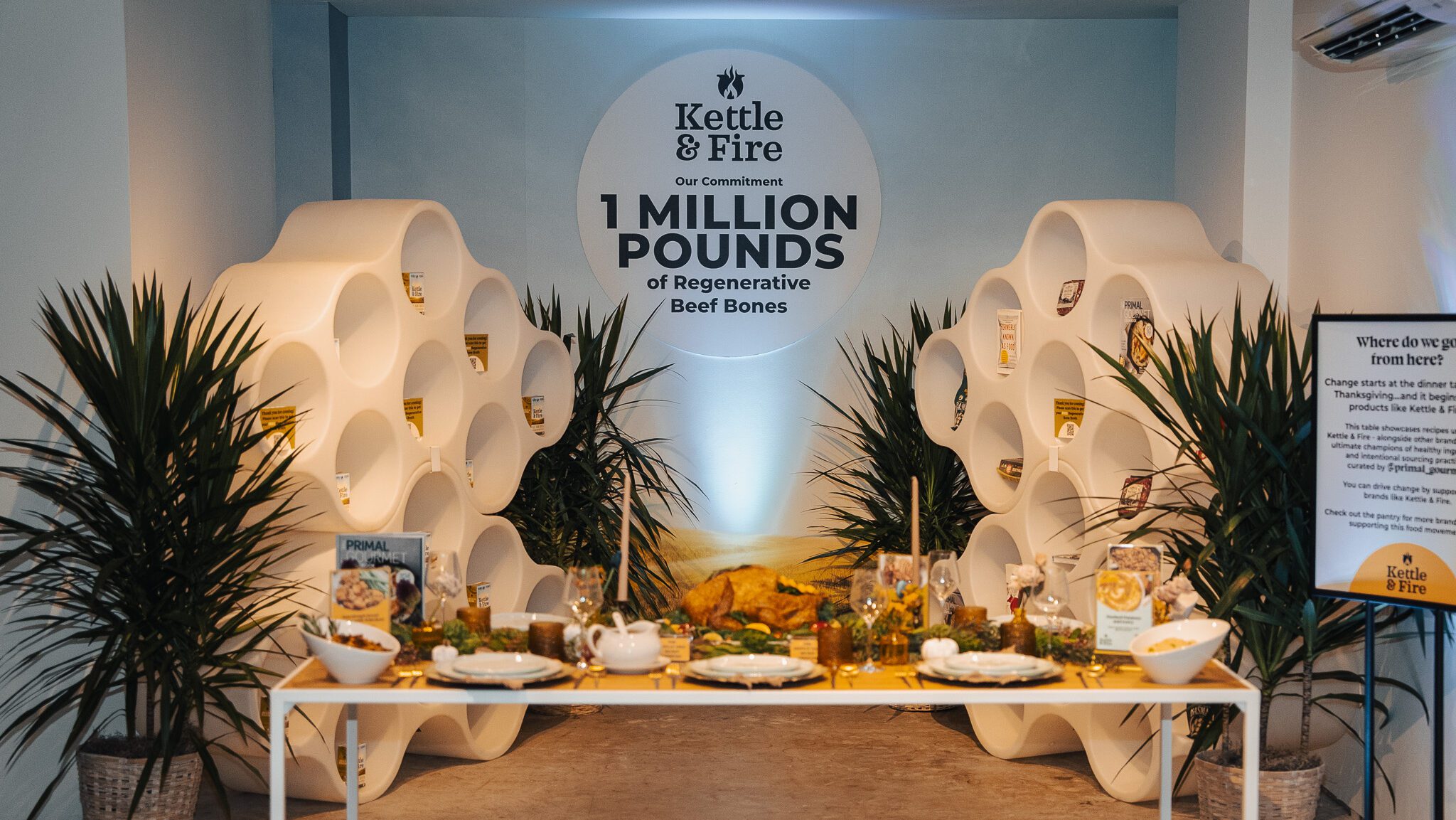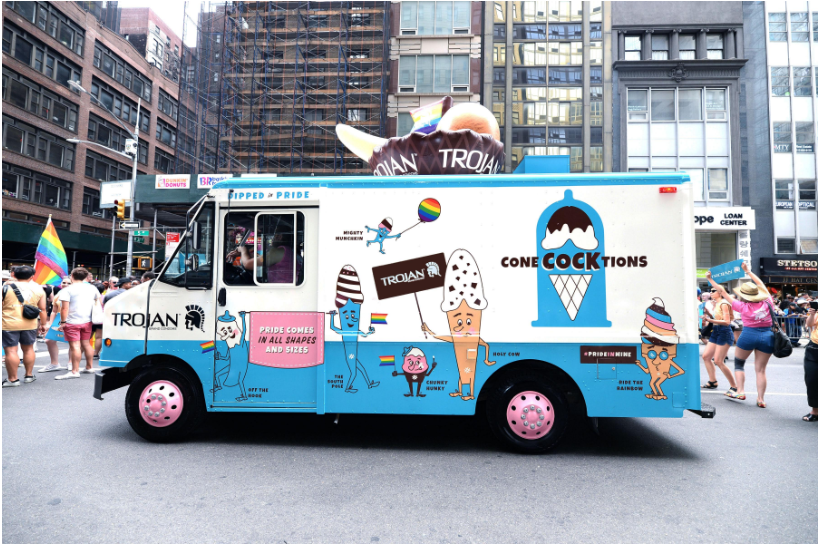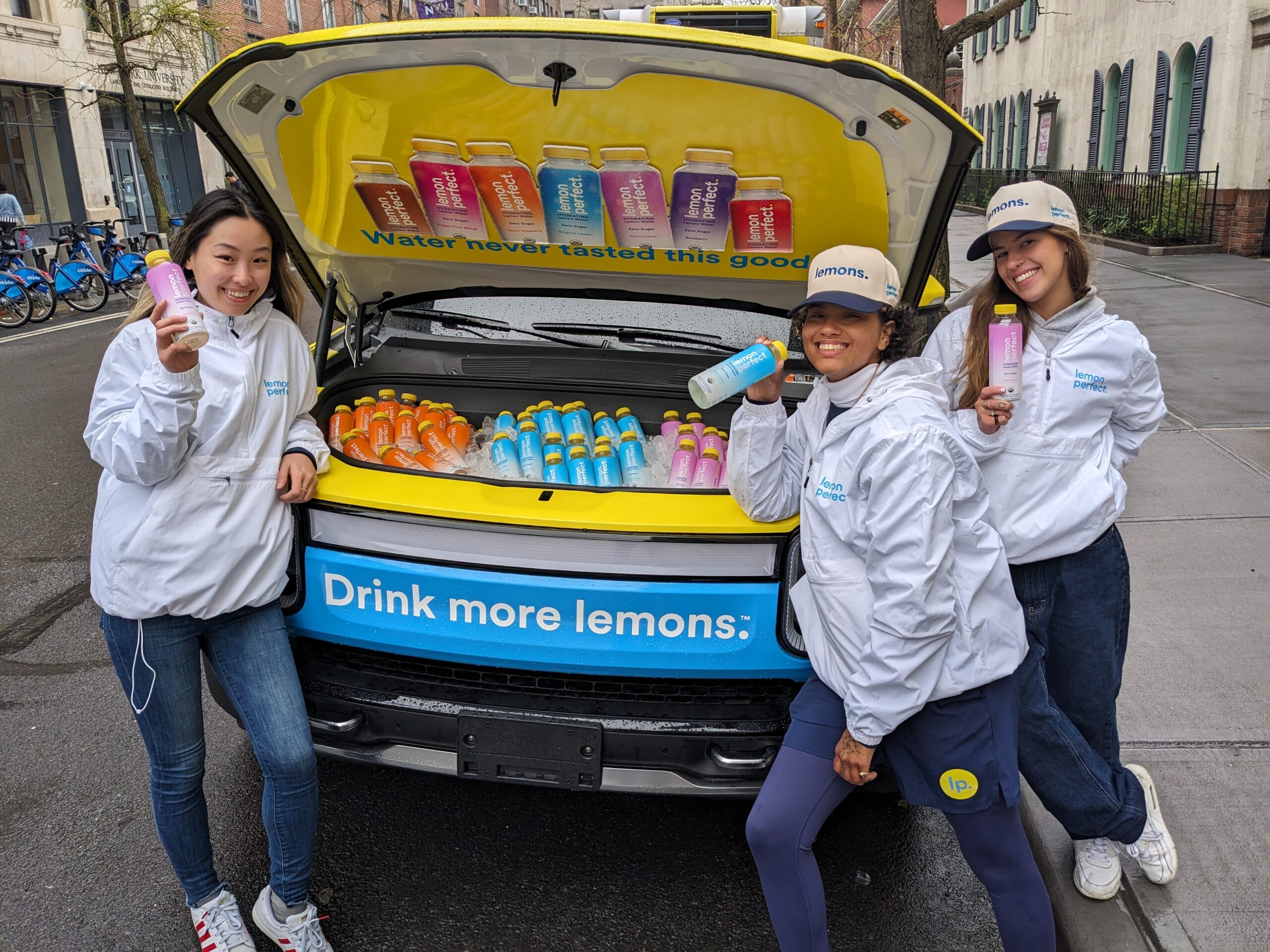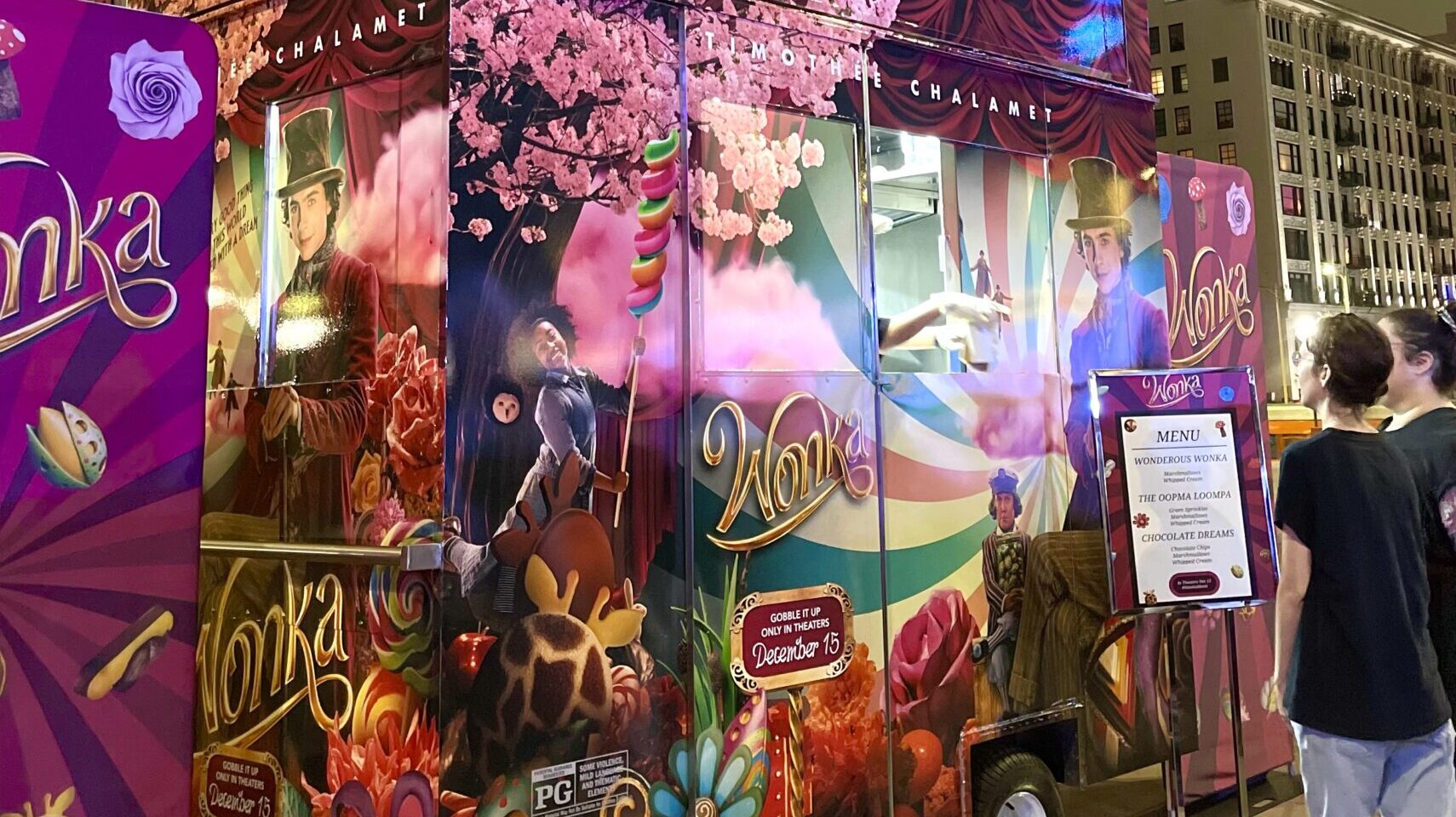
- Experiential Marketing
The Power of Storytelling in Experiential Marketing
Whether delivered via a pop-up, a brand activation, or some other means, experiential marketing is the best way to create lasting connections with your consumers. Experiential marketing engages customers in a compelling, emotional way through memorable experiences that are unique to the brand. And consumers appreciate these experiences; in one study, 65% of consumers said that live events and demonstrations helped them understand a product better than any other method could.
How can a brand further increase the power and persuasiveness of experiential marketing? Build it around a story.
Why Storytelling?
Storytelling is as old as human existence — and our brains are wired for it to such an extent that relaying information as stories dramatically increases memorability of both facts and narrative. Consumers are receptive to hearing and seeing stories in marketing and advertising; in one study, 92% of consumers said they actually wanted brands to make ads that feel like stories. Stories are relatable, with audiences often projecting themselves into the narrative, into the struggles and triumphs of the characters, and this helps them connect emotionally with the story and the storyteller. When used in marketing, “Stories bridge the gap between the consumer and the producer,” says a recent post on visme.co.
Here are some key steps for harnessing this storytelling super-power to amp up the effectiveness of your experiential marketing.
Start with Your Story
Every brand has a unique story — a combination of purpose, origins, process, and people that’s unlike any other. You probably already tell your story on your website and in print ads, TV spots, and other traditional marketing media as a past-to-present narrative of your brand’s history, or a problem-solution explanation of your value proposition. And that’s often enough for those media.
A pop-up or brand activation, however, requires a more immersive, multi-sensory approach, one that puts the customer at the center, using elements of storytelling to weave a compelling, memorable narrative. In experiential marketing, storytelling “is what sets brands apart from each other,” writes Stephanie Atlas for LinkedIn. “The key to a brand’s storytelling and marketing strategy is weaving together facts and emotions to evoke memorable shared experiences.”
Build the Narrative
At its core, a story is a description of events, animated by one or more characters, that follows some logical sequence to a satisfying conclusion. Working narrative into experiential marketing means incorporating some or all of these storytelling elements into the information you present to your audience:
Setting
The where and when of your story, a well-crafted setting establishes time and location, and can be narrow and specific or broad and descriptive. It can be a realistic place or fantastic and otherworldly.
Setting includes the atmosphere you create, and it gives you an opportunity to create wonder and a sense of magic for your audience. Your story might be compelling on its own, but injecting elements of wonder and surprise can help more deeply engage visitors and drive home your message.
Interactive elements can be another engaging aspect of the setting. When participants have to enter an email address or push a button to view content, or play a game to “unlock” information or a sample, that adds memorability and ownership to the experience.
Character
Every story needs a main character, real or fictional. In traditional storytelling media, like short stories and novels, the character is someone who lives in the “world” of the work itself.
In experiential marketing, however, the protagonist might be the attendee, explains a recent LinkedIn article. “We must consider how we can set them on a path toward transformative adventure through technology and immersion.” When you create a story in which the attendee is the protagonist, you make the consumer part-owner of the story — and that’s engagement, at a deep and personal level.
Conflict
Conflict is what propels stories forward, contributing tension and building suspense. “All good stories start with the disruption of the mundane — our character’s life flipped upside down in what we storytellers call the inciting incident,” the LinkedIn article continues. The inciting incident for your pop-up or activation might be a problem your product solves (or helps solve), or it might be the marketing itself — the novelty and surprise contained in the setting you create. Whatever this incident, it needs to feel compelling to attendees — they need to both feel and understand the transformative potential of what you’re offering.
Resolution
The resolution is the point at which the conflict is brought to a satisfying conclusion. In this moment, the character is transformed; in a marketing context, this might be the moment the attendee commits to making a purchase, taking a sample, or participating in the event. It might also be the moment you choose to position your product or service as the solution to the conflict.
Measure Success
Attendees want to be entertained, to have fun, and to feel connected to your brand. Those are achievable for experiential marketing, but they don’t produce easily measurable outcomes.
Consider what you are hoping to accomplish with your experiential marketing. Increased sales, lead generation, brand awareness? Those are the kinds of goals that produce measurable data. Knowing what your goals are from the earliest planning stages of your pop-up or activation can help you identify ways to measure success.
If you’re selling products at the event, that’s an easy number to track. But some visitors will buy later — so consider how and for how long will be measure sales post-event?
Lead generation might mean capturing names and email addresses, social media handles, or other information that gives you a way to reach back out to prospective customers. Measuring brand awareness could mean conducting surveys and interviews to determine whether your message is reaching visitors.
Number of visitors, total purchases, and number of emails captured are great numbers to have, but they won’t tell you everything. Dig deeper by choosing metrics relevant to your event, such as the following:
Conversion ratio: The number of qualified leads divided by the total engagements is a great way to measure how well the event connected with attendees.
Engagements per brand rep: Have your brand reps or street team members track engagements of all kinds throughout the event.
Brand sentiment and awareness: Use surveys and interviews to find out whether your event generated positive buzz or changed attendees’ brand awareness.
Social media awareness: Track how many people used your branded hashtag, how many liked or followed your channel, and how many mentions appeared online.
Sales: Track how many sales you saw before, during, and after the activation or pop-up, as well as how many were made by new customers vs. returning customers.
Sampling: Keep track of samples distributed during the pop-up or activation.
Engagement: If your experience includes interactive elements, track how many visitors actually interacted vs merely wandered through.
Case Study: Hellmann’s Mayonnaise
The Experience: Hellmann’s Mayonnaise has a long-term, broadly based campaign against food waste. Two parts of this campaign — a 2023 Super Bowl ad and a cross-country tour — use giant jars of mayonnaise as eye-catching, intriguing visual elements.
Background: The ad tied into Hellmann’s broader #MakeTasteNotWaste campaign against food waste, which also featured an unusual cross-country tour: Encased in a glass box, a giant mayonnaise jar bearing the iconic Hellmann’s label traveled from Phoenix, Arizona, to Unilever headquarters in New Jersey. For every mile the jar traveled and every photo posted to Instagram, Twitter and Tiktok with the hashtag #MayoForMeals, Hellmann’s donated meals to its long-standing partner, Feeding America.
Storytelling Elements: The mayonnaise brand’s 2023 Super Bowl ad opens inside a refrigerator, where actors Jon Hamm and Brie Larson are standing next to a jar of Hellmann’s Mayonnaise and puzzling out how they got there and what they’re supposed to be doing. The 30-second spot tells a story about comedian Pete Davidson making dinner using ingredients already in his refrigerator — the point being that Hellmann’s can be used to turn leftovers into a filling, delicious meal or snack.
In the broader campaign against food waste, however, the viewer is the protagonist, and he or she is presented with a conflict: how to make better use of leftover food and thus play his/her part in reducing food waste. The resolution: use Hellmann’s to turn leftovers into additional meals as well as save money.


Case Study: Kettle & Fire
The Story: Leading bone broth brand Kettle & Fire staged a pop-up journey through America’s deeply flawed food system to highlight both its products and its pledge to work toward repairing that system.
Background: As part of Kettle & Fire’s broader commitment to offering healthy, nutrient-dense products, the brand recently made a commitment to sourcing one million pounds of regenerative beef bones by 2025 — a significant step toward a healthier future as well as an example for other brands in the industry.
Storytelling Elements: Kettle & Fire needed a way to talk to consumers about the U.S. food system, but this is a complex issue, requiring detailed, nuanced messaging. Kettle & Fire needed a way to hold consumers’ attention long enough to take in the full story. In fall 2023, the brand worked with Promobile Marketing to create a pop-up–activation hybrid event that would take attendees through the flawed food system and the practices Kettle & Fire has adopted for a healthier future.
Staged in New York City’s SoHo neighborhood, the pop-up created an immersive six-part experience. Guests first received a product sample — a cup of Kettle & Fire’s bone broth — then walked through a mock grocery store as a way to identify the unhealthy ingredients hidden in seemingly wholesome foods. The next section used a lifesize projection wall to map changes in farming practices over the last 100 years, while the next explored a comparison of how meat, chicken, and vegetables have changed over time in unsustainable ways that reduce nutrient density. As a hopeful resolution to these issues, the event offered a wholesome, nutritious Thanksgiving menu curated by a chef/influencer, then ushered guests into a curated pantry that showcased similarly sustainability-minded brands.
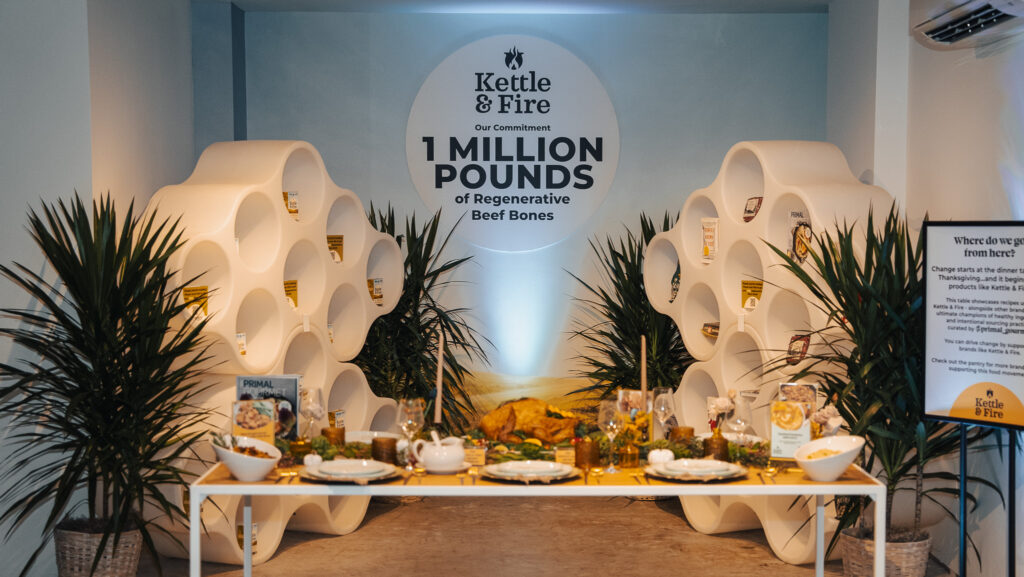

Promobile Marketing is a dynamic experiential marketing agency based in New York City. For over a decade, Promobile Marketing has collaborated with a range of brands—from budding startups to major CPG brands—on immersive marketing campaigns. Get in touch to discuss your next project.
